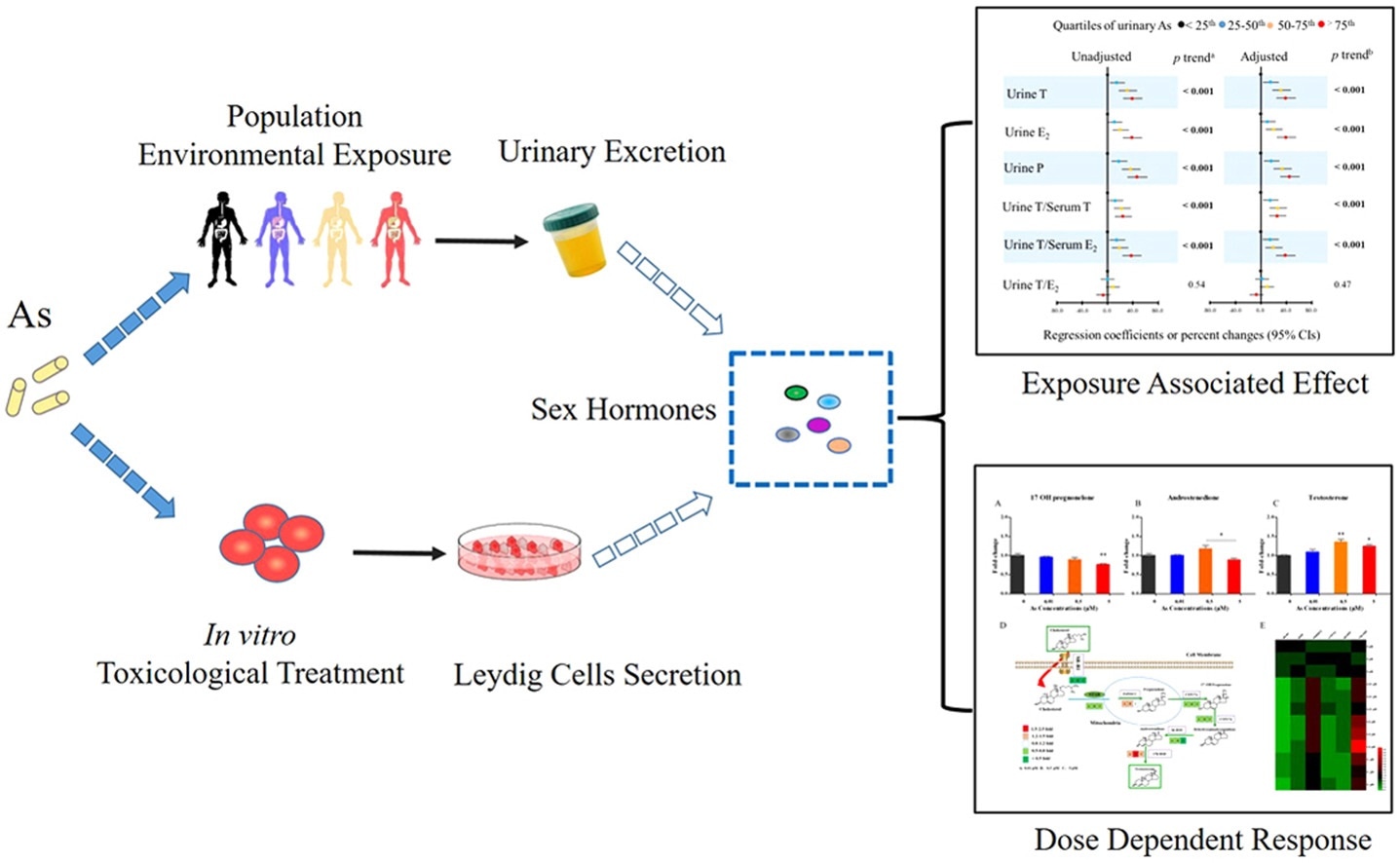Arsenic, a metalloid substance, exists ubiquitously in an organic or inorganic state in the environment. General populations are commonly exposed to arsenic by digestion and inhalation.

Endocrine disruption mode for environmental dose arsenic exposure. Image Credit: Institute of Urban Environment.
Environmental exposure to arsenic is related to numerous adverse health effects like male reproductive toxicity. Arsenic is an endocrine disruptor and categorized as a reproductive toxicant. Nevertheless, the mode of disruption of arsenic is still contradictory at levels of exposure that are ecologically important.
Scientists from the Institute of Urban Environment (IUE) of the Chinese Academy of Sciences and the Harvard T.H. Chan School of Public Health have currently worked together to find new modes of male endocrine damage due to environmental exposure to arsenic by combining epidemiological and in vitro toxicological studies.
As part of the study, the team detected urinary arsenic and sex hormones among 451 males of reproductive age. General populations were observed to be widely exposed to arsenic and have been shown to have exposure to arsenic positively correlated with urinary excretion of sex hormones.
The team used mouse testicular cells as exposure models for in vitro arsenic and further confirmed low-dose arsenic stimulating testicular cell development of testosterone sex hormones.
The study results reflect that low-dose exposure to arsenic manifests a novel endocrine destructive effect by inducing the development of Leydig cell sex hormones and accelerating the urinary excretion of sex hormones. This broadens prior understanding of the opposite relation of high-dose exposure of arsenic to the production of sex hormones that are believed to be anti-androgen.
Urinary hormone excretion may serve as complementary strategies and sensitive noninvasive tool for arsenic endocrine disruption assessment.”
Dr Meiping Tian, Study Co-First Author, Institute of Urban Environment, Chinese Academy of Sciences
The study was supported by the Crossing-Group Project of KLUEH, the National Natural Science Foundation of China, and Science and Technology Foundation of Medicine and Health of Zhejiang Province.
Source:
Journal reference:
Tian, M., et al. (2021) Environmental doses of arsenic exposure are associated with increased reproductive-age male urinary hormone excretion and in vitro Leydig cell steroidogenesis. Journal of Hazardous Materials. doi.org/10.1016/j.jhazmat.2020.124904.